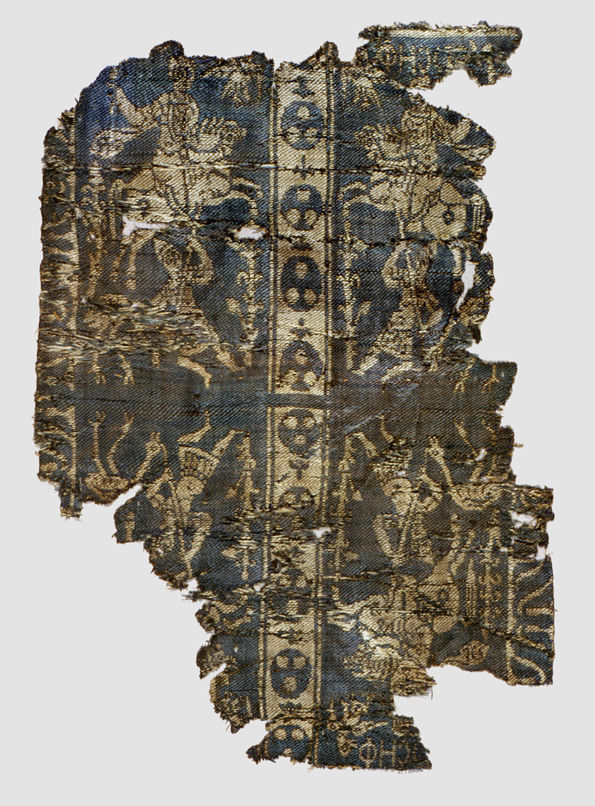Silk textiles were produced in Byzantium long before local weavers had figured out how to acquire and produce silk from silkworms. For centuries, the Chinese held a monopoly on the raw materials required to create these highly desired textiles.
From the fourth through sixth centuries, the production and use of silk was reserved for the ruling class, woven by state-sponsored workshops. Sumptuary laws on color (reserving purple for the emperor, for example) and dress styles (reserving chausables for bishops, as the Church adopted the use of silk garments) were later tempered by an emerging middle class of merchants who desired their own stylish silk garments.
As the consumer demographic for silk textiles expanded, this growth led to the establishment of independently owned private workshops. Both royal and independent workshops purchased raw silk from farmers, worked with dyers to achieve desired colors, and wove polychrome silks on the drawloom, another Chinese invention (from about 1900 B.C.). The drawloom's technical features allowed for intricate and complex designs to be woven in the twill compound samit technique in a broad palette of colors.
Silk with "Samson" and the Lion (detail), late 6th–early 7th century. Made in Eastern Mediterranean. Weft-faced compound twill (samit) in polychrome silk. Byzantine Collection, Dumbarton Oaks, Washington, D.C. (BZ.1934.1)
Documented in the Secret History by Procopius, traveling monks during the time of Emperor Justinian (r. 527–565 A.D.) smuggled silkworm eggs from China in their walking staffs, bringing the fibers to Byzantium. Simultaneously, the Sasanians in Iran began a domestic industry in raw silk production, and a thousand-year battle for the trade of these raw goods ensued. After 650, the conquering Arab Muslims took over the Iranian silk trade, while the Byzantines retained control of their production and continued to perfect their woven textiles, as demonstrated by this example:
Fragment of a Band with Noble Equestrian and Soldier, Inscribed "Joseph" in Greek or Coptic, 7th–9th century (?). Made in, Egypt or Syria (?). Weft-faced compound twill (samit) in blue-violet and beige silk. Byzantine Collection, Dumbarton Oaks, Washingtion, D.C. (BZ.1956.2)
Further Reading
Muthesius, Anna. Studies in Byzantine, Islamic, and Near Eastern Silk Weaving. London: Pindar Press, 2008.
Muthesius, Anna. Byzantine Silk Weaving: A.D. 400 to A.D. 1200. Vienna: Fassbaender, 1997.

